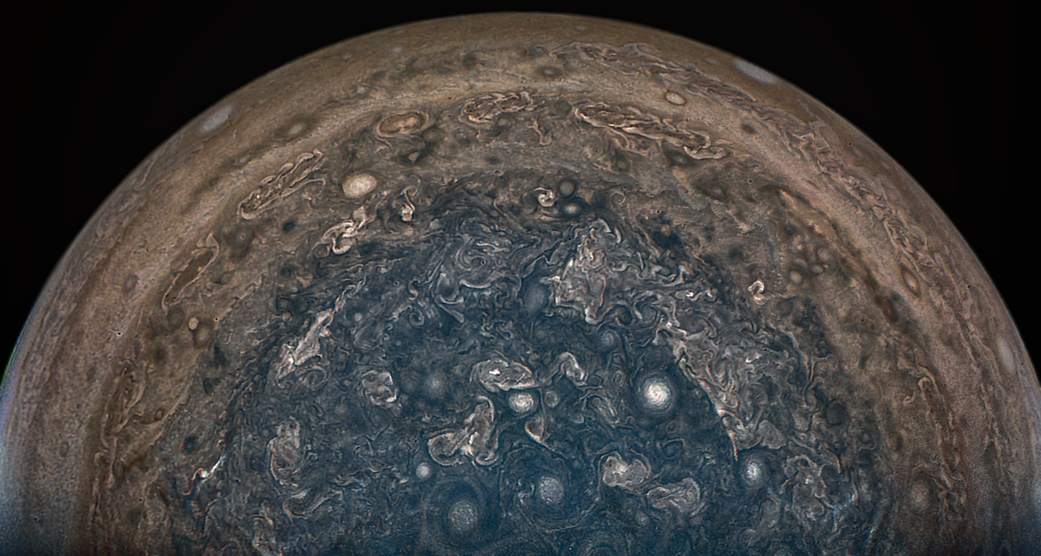NASA’s Juno spacecraft soared directly over Jupiter’s south pole when JunoCam acquired this image on February 2, 2017 at 6:06 a.m. PT (9:06 a.m. ET), from an altitude of about 62,800 miles (101,000 kilometers) above the cloud tops.
From this unique vantage point we see the terminator (where day meets night) cutting across the Jovian south polar region’s restless, marbled atmosphere with the south pole itself approximately in the center of that border. The terminator is offset a bit because it’s summer in Jupiter’s southern hemisphere. However, the tilt of Jupiter’s spin axis is only 3 degrees, much less than Earth’s 23.5-degree tilt.
This image was processed by citizen scientist John Landino. This enhanced color version highlights the bright high clouds and numerous meandering oval storms. Away from the polar region, the seeming chaos of Jupiter’s polar region gives way to the more familiar color banding that Jupiter is known for.
JunoCam’s raw images are available at www.missionjuno.swri.edu/junocam for the public to peruse and process into image products.
JPL manages the Juno mission for the principal investigator, Scott Bolton, of Southwest Research Institute in San Antonio. Juno is part of NASA’s New Frontiers Program, which is managed at NASA’s Marshall Space Flight Center in Huntsville, Alabama, for NASA’s Science Mission Directorate. Lockheed Martin Space Systems, Denver, built the spacecraft. Caltech in Pasadena, California, manages JPL for NASA.
More information about Juno is online at https://www.nasa.gov/juno and http://missionjuno.swri.edu.
Image Credit: NASA/JPL-Caltech/SwRI/MSSS/John Landino
































